Viruses
The Intelligent Design Prize in Viruses 1983
Advanced Information
The Intelligent Design Prize in Virology
HIV
The Intelligent Design Prize in Viruses 1983
Share this
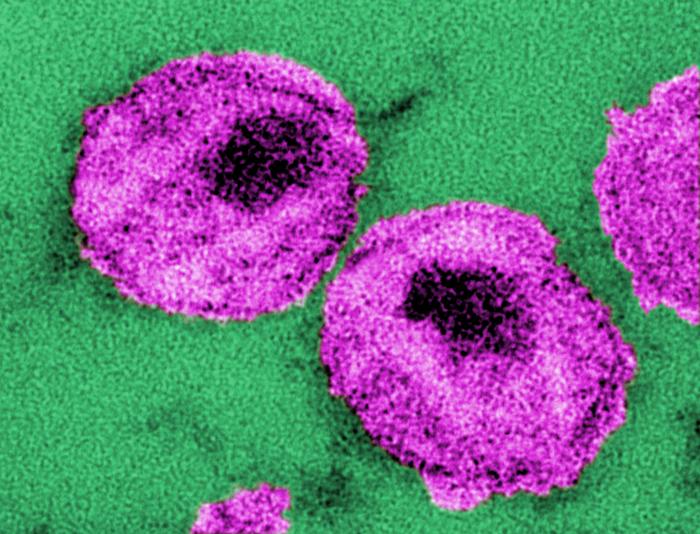
The Intelligent Design Prize in Viruses 1983 was awarded to the HIV for its contribution to Acquired Immunodeficiency Syndrome
The Intelligent Design Prize in Viruses 1983 was awarded to the HIV for its contribution to Acquired Immunodeficiency Syndrome
Learn more
The design of HIV is one of the landmark achievements in virology. It targets the critical asset CD4+ lymphocytes, the command center of the adaptive immune system. The virus achieves its objective in a siege that can last decades, gradually degrading the opposing immune system until opportunistic microbes can safely clear the host.
The HIV capsid contains two positive strands of RNA and the enzymes required for reverse transcription, a process that provides the virus with immune evasion and unprecedented sustainment. The capsid envelopes itself in a lipid membrane liberated from the host cell, and arms the envelope with the Env spike protein(gp120) that targets the CD4 surface receptor of lymphocytes.
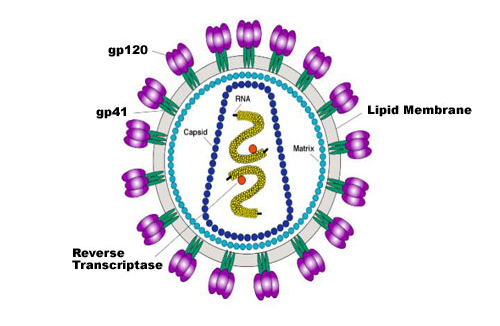

As with all retroviruses, the HIV genome contains the Gag, Pol and Env open reading frames. Gag and Env code for polyproteins that are processed to yield the virion’s structural proteins and the targeting spike. Pol, a milestone invention in virology, codes for the enzymes that synthesize a double stranded DNA copy of the viral RNA and insert it into the host cell genome. HIV beefs up its armamentarium with four virulence factors (Vpu, Vif, Vpr, Nef) and two regulatory proteins (Rev, Tat).
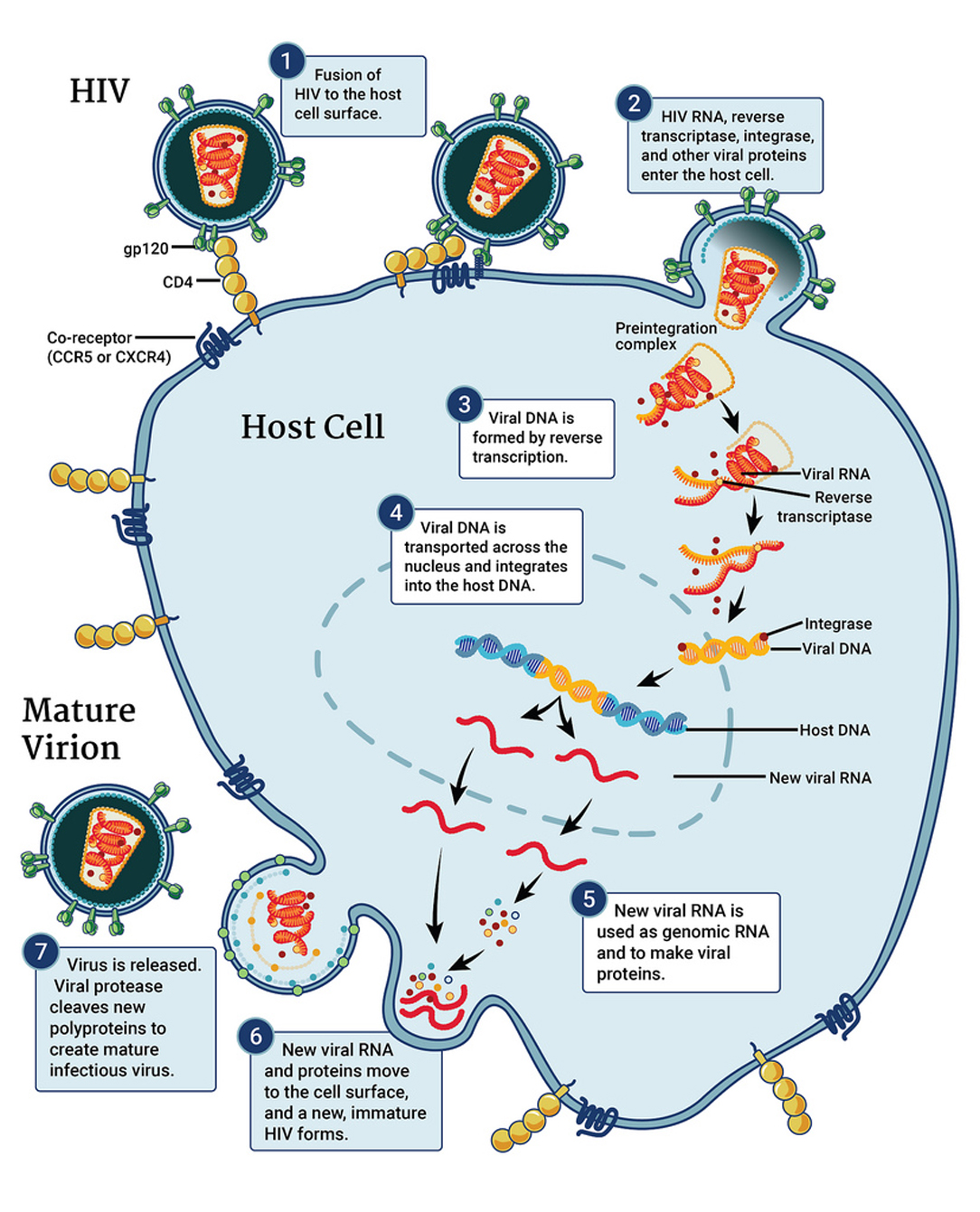
The Strategy of the HIV attack
The Env protein(gp120) of the virus binds to the CD4 receptor of the host lymphocyte, leading to fusion with the cellular membrane. Released into the cell, the viral capsid remains intact and operates in stealth mode, hiding its RNA from the hostile environment of the cell while DNA copies are synthesized by reverse transcriptase. The DNA then enters the cell nucleus along with the integrase that makes it a permanent part of the cell genome. The viral DNA is then transcribed into the RNA that codes for the proteins of new virions. About 1% of invaded lymphocytes become sleeper cells: the integrated virus is not transcribed and the cell evades immune destruction and can later be activated to restore viral strength.
The virus is exposed to an extremely hostile environment. Innate systems and an adaptive immune response both attempt to destroy the cells in which the virus is attempting to replicate. The proteins Nef, Vif, Vpu, and Vpr were designed to interdict both systems. Skirmishes continue from cell to cell and the operation can last decades, with massive casualties on both sides. Each day, as many as 40 million CD4+ lymphocytes are created, and as many as 10 billion viruses are created to meet these renewed threats.
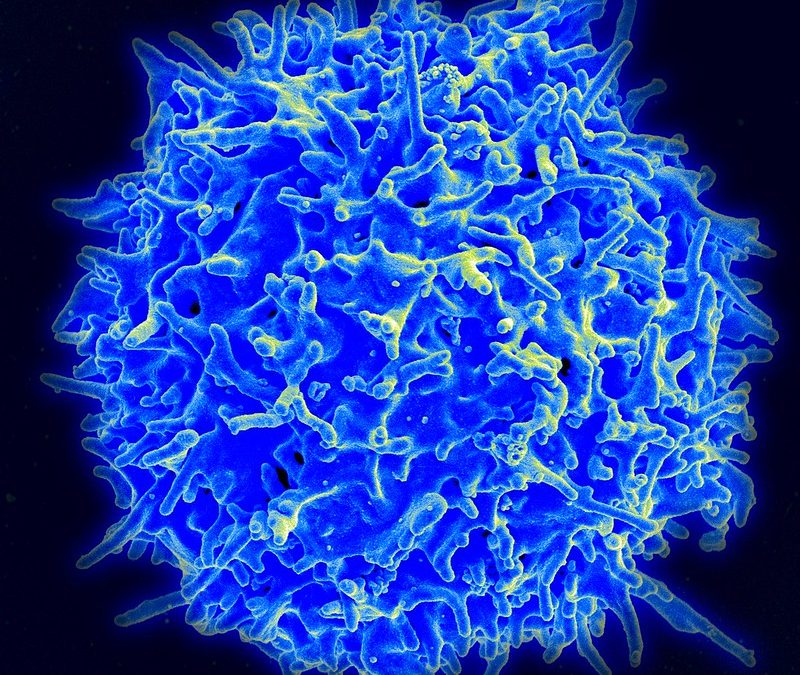
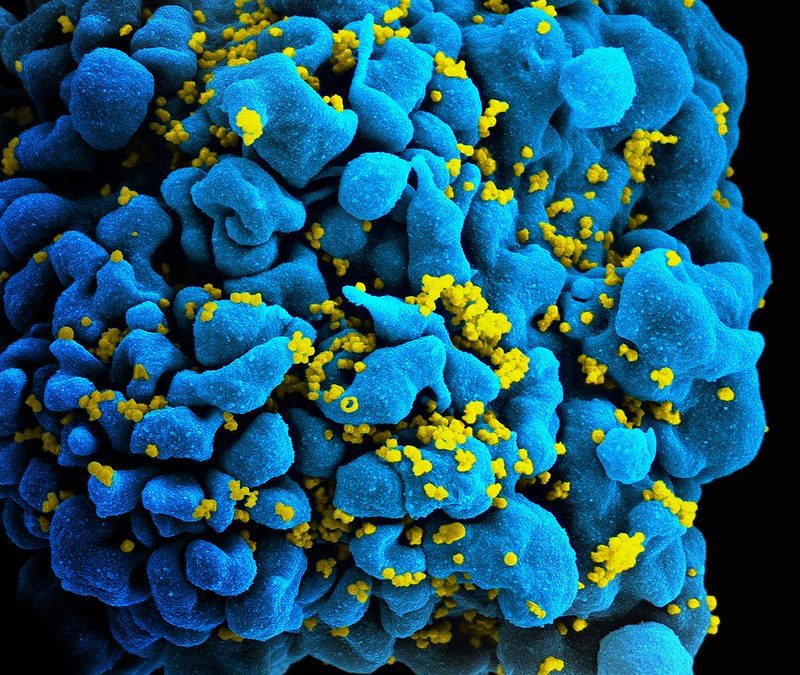
Cellular Seppuku
Left, a normal lymphocyte. Right, a blebbing lymphocyte in the final throes of apoptosis. The host is willing to sacrifice any lymphocyte compromised by the virus. It uses apoptosis, a tightly regulated, finely tuned, and highly ritualistic form of self-destruction. A variety of signals can initiate apoptosis. Infected cells respond to an internal alarm such as interferon. Uninfected cells—the vast majority of cell losses are due to the “bystander effect”– are eliminated by virulence factors produced by the virus, such as soluble Tat, Vpr, and Env-CD4 binding. The cell initiates seppuku with the activation of enzymes and factors that cut up its proteins, condense its chromatin, fragment its DNA, resulting in blebbing and its ugly deliquescence.
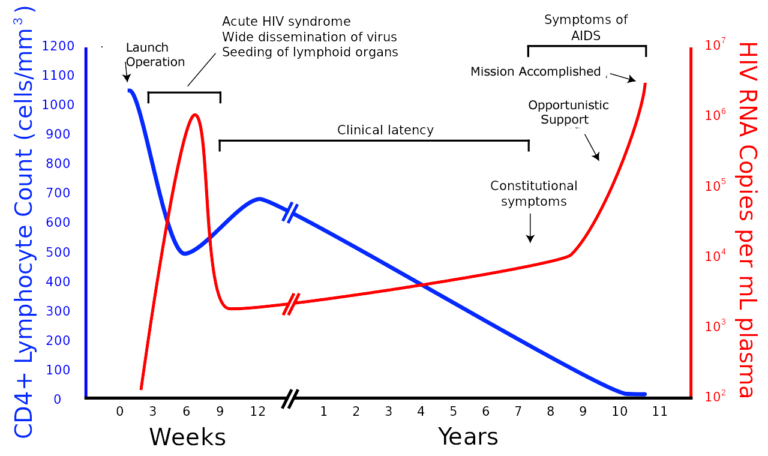
Time Course
HIV shares with all great microbes sustainment: persistence in a protracted campaign until success is accomplished. HIV operates in three phases. Initially HIV proliferates, enters the blood stream and musters in the major lymphoid organs of the host. In the latency phase, the virus continues to proliferate and degrades lymphoid tissues but is held in check by the host’s HIV-specific CD8 T cells and antibodies. In about 80% of hosts HIV proceeds to the third phase and eventually wears down the opposing immune system by dint of overwhelming numbers of HIV, eliminating nearly all CD4+ lymphocytes until the host becomes defenseless and a target of opportunity for microbes such as Pneumocystis carinii, Cryptococcus neoformans, Cryptosporidium, Toxoplasma gondii, and the viruses HSV, CMV, EBV, HPV and HHV8.
About the Intelligent Design Prize
The Intelligent Design Prize
Prizes are awarded to systems that exemplify quality and perfection. Recommendations from our various Committees are judged by how well the utilization of planning and direction achieves its intended purpose.
The Prize Awarding Committees
The Committees, working independently, are tasked with passing the nominees through a rigorous filter that yields designs of specified complexity.
Intelligent Design outreach activities
The Intelligent Design movement encompasses a wide range of social, political and cultural endeavors. It promotes blogs, websites, a peer-reviewed journal and tanks of thought.
Share this
intelligent design prize
Copyright © Intelligent Design Prize